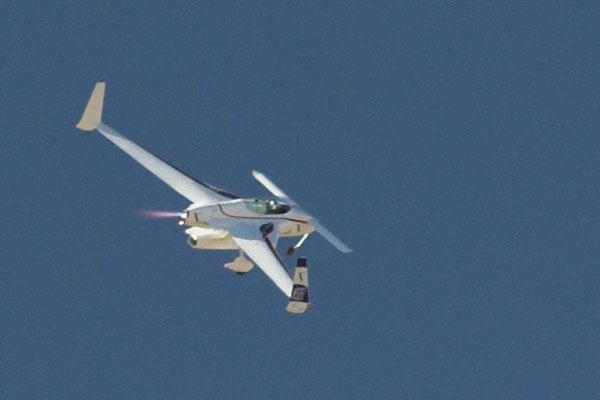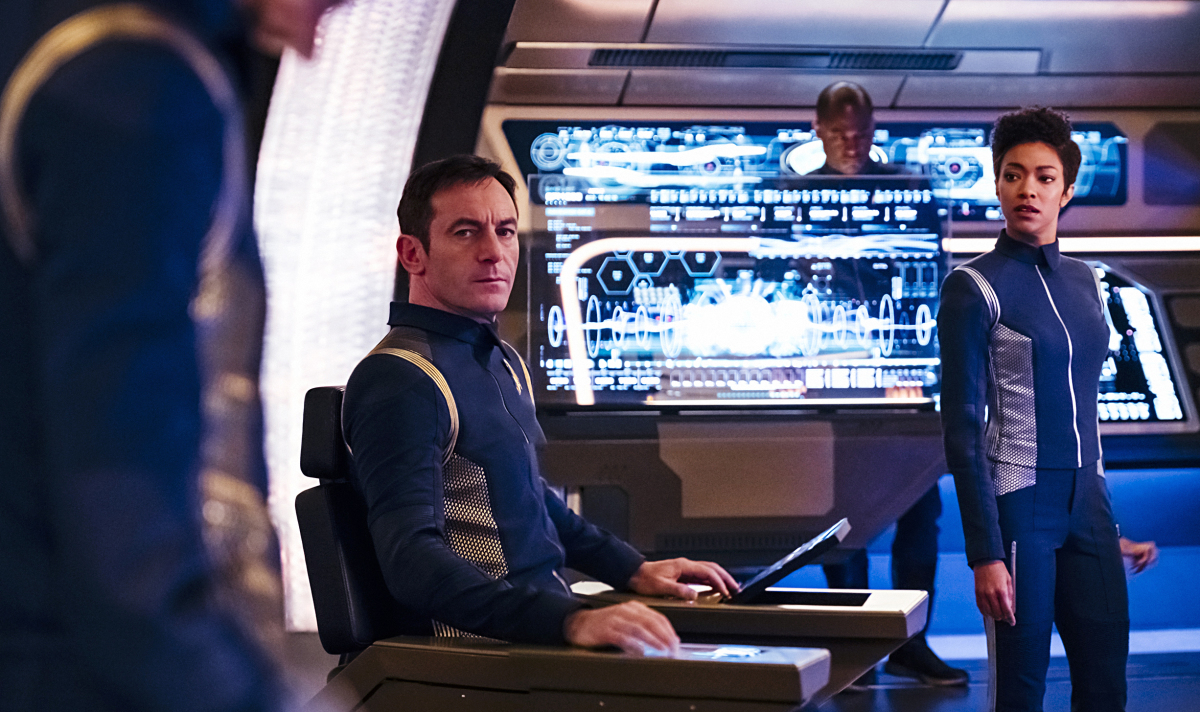Private Spaceflight: Shifting into Fast Forward

LASCRUCES, New Mexico -- The next generation of human spaceflight is no longer thesole province of governments. Private spaceships transporting passengers firstto the edge of space--and ultimately into orbit--are in various stages of design,construction and testing.
What'smore, there is an air of competition between rival camps of rocketeers. Theyforesee big business as patrons dig deep in their wallets to shoot for the sky.
Lastyear's trio of suborbital flights by SpaceShipOneverified that the technological resources to build safe, affordable vehicles isat hand. Multiple spaceports spread around the country, and perhaps the world,may well handle outgoing and incoming spaceliners. Point-to-point suborbitalspace hops could permit super express delivery of payloads and passengers. Andwhy not a five-star spa in Earth orbit?
Entrepreneurialrocketeers, government leaders, spaceport developers, economic and tourismexperts took part in the FirstInternational Symposium on Personal Spaceflight, held here October 6 and presentedby the X Prize Foundation and New Mexico State University (NMSU). The symposiumwas sponsored by Arianespace-USA.
TheX Prize Foundation has formed a partnership with the state of New Mexico tohost the annual XPrize Cup and to assist in building the Southwest Regional Spaceport inUpham, New Mexico. This year's activity is called the Countdown to the X PrizeCup.
"Weare entering an age where the economics and drivers of spaceflight will helpbring the prices down many fold, with reliability up. That will unleash theresources of space to the people of Earth...and that's our goal," said PeterDiamandis, Chairman of the X Prize Foundation.
Exciting sector
Breaking space news, the latest updates on rocket launches, skywatching events and more!
Onebuzz of curiosity at the one-day gathering dealt with the symposium sponsor,Europe's Arianespace, the commercial rocket-for-hire group created in 1980.
Theseries of SpaceShipOne suborbital flights last year was a thrill heard aroundthe world, said Clayton Mowry, President, of Arianespace's U.S. affiliate. "Wesee something here. We're not sure exactly how we play in this space yet. We'rehere to learn...to see what's going on. We feel the excitement and we want to seeif there's a way that we can work in this exciting sector," he told SPACE.com."The excitement is contagious."
Mowrysaid that Arianespace has strengths in sales and marketing, contracts, as wellas integration and operation. "A lot of these little companies could usesomeone with that kind of experience," he said.
Arianespace is a well-known name,particularly in Europe - a symbol of European success in space, Mowry said. "Infact, if you were to market commercial space services, and you wanted a firm inEurope that could market that service for you in Europe...it would certainly be anatural for us," he added.
Hardware on the floor
Amongthose detailing their future suborbital plans was Chuck Lauer, Vice Presidentof Business Development for Rocketplane, Inc., headquartered in Oklahoma City,Oklahoma.
"There'shardware on the floor...all kinds of engineering going on," Lauer told theaudience. Rollout of their suborbital Rocketplane XP is slated for fall 2006,with the craft to be present and accounted for at the X Prize Cup to be heldhere next year.
Atthe end of 2006, early 2007, "our intention is to be minting lots of civilianastronaut wings for everybody that's climbing into our vehicle," Lauer said. Hesuggested that a large market making use of the same suborbital technology nowbeing developed is point-to-point delivery of people and cargo - one-hour hopsto anywhere on the planet.
Lauerchided NASA for its spending of taxpayer dollars, at the expense of supportingprivate spaceflight operators.
"Thegovernment needs to figure out how to be a smart customer rather than acompetitor to the entrepreneurial industry," Lauer said. "Why in the world doesthe government have to spend tens of billions of dollars creating dedicatedgovernment systems to do what the private sector can, should, and wants to do?"
Second prize race
"We'rein the business of selling incredible views," said Brian Feeney, team leader ofthe Toronto, Canada-based Golden Palace.com Space Program, powered by the daVinci Project.
Feeney'seffort was once in the running to win the $10 million Ansari X Prize, as were anumber of groups around the world. That purse was won last year by Burt Rutanand his team at Scaled Composites in Mojave, California that builtSpaceShipOne, bankrolled by Microsoft mogul, Paul Allen.
Feeneyand his team have worked for over nine years developing their balloon-assistedsuborbital rocket plans. "We've got the real testing behind us," he said, butadded that still more evaluations of the hardware are spread out over the nextsix months - leading to flight by the end of 2006.
Therewas also a blush of unofficial competition between groups vying to get theirsuborbital designs into the air next. The drum beat to become the second effortto fly a private craft to the edge of space is clearly getting louder.
"Ithink there's a bit of a second prize race developing among some of the teams,"Feeney suggested.
So much vision
JeffGreason, President of XCOR Aerospace of Mojave, California, said they continueto work on their Xerus suborbital rocket plane, providing a cryptic update:"That program is underway and that's about all I can say about that at thistime."
XCORis also turning their attention to the recently announced RocketRacing League, featuring X-Racer planes based on the company's EZ-Rocketdesign.
Greasonsaid there are numerous challenges ahead for private spaceflight groups.
"Wedon't know how to make spaceships that fly a couple of times a day, every dayfor years," Greason told the audience. How to start making a profit alsoremains elusive, he said, "but we think we've got some pretty good ideas how tosolve them."
"We'vegot so much vision," Greason said. "Vision is the one thing that's not been inshort supply. We're short of everything else," he concluded.
Virgin Galactic: order is in
Clearlyoff to a roaring start in the space tourism business is that of VirginGalactic. The company was formed by British entrepreneur, Richard Branson,to handle space tourist flights. He has linked up with aerospace designer, BurtRutan of Scaled Composites, forming a new aerospace production company--The SpaceshipCompany. That entity will build a fleet of commercial suborbital spaceshipsand launch aircraft.
Theorder is in for the first five spaceships, with an option on the next five,said Alex Tai, Vice President of Operations for Virgin Galactic. "We'll beoperating in front of everyone else for at least two years or so," Taipredicted.
Taisaid that Virgin Galactic is happy with the deal struck with Rutan, but added:"We want to make sure that people realize that we're not just married to BurtRutan technology," he told SPACE.com.
"Wewant to select the best technology for spaceflight participants of the future. We'renot wedded just to Burt," Tai said. "We're very supportive of all the thingsthat everyone else is doing. I've been talking to a lot of different people andtold Burt that he had better stay on his toes. There's some really cool stuffout there that's going on," Tai explained.
Major motivator
Spacetourism is happening, declared Priscilla Bloomquist, Associate Professor ofHotel, Restaurant and Tourism Management at NMSU. She admitted that for many inher field, public space travel has been viewed as something off into the farfuture. "But the reality is that it's a reality."
However,Bloomquist did flag the fact that the personal spaceflight industry is drivenheavily by the space side of the equation. "There needs to be more buy-in fromthe tourism side of the table," she said. Underscoring the fact that a spacetourist is in it for the experience, those in the personal spaceflightbusiness, she suggested, must be cognizant that this new industry should be"guest driven."
"Clearlyprice is a big issue," Bloomquist noted. Windows for viewing, a free-floatingexperience versus being strapped down tight, duration of the journey, and levelof flight preparation - all these factors and others, she added, will influencewhether or not people are going to put down good money to sail spaceward.
"Braggingrights," garnered by those public space travelers "is nothing new to thetourist industry. Status and prestige is a major motivator," Bloomquistadvised.
Theemergence of Virgin Galactic as a spaceline operator, Bloomquist said, shouldhelp shore up public confidence in space tourism. "There is a major trustfactor that they bring to the table," she said.
Education and economic impact
The growth of personal spaceflight and the promise of the state's SouthwestRegional Spaceport becoming reality just outside Las Cruces is all good news,said Patricia Hynes, co-chair of the symposium. She is also director of the NewMexico Space Grant Consortium at NMSU.
Talkof a New Mexico spaceport has been on-going since 1992, Hynes said. "I've beeninvolved in the spaceport because, in my mind, it was never a matter of if...itwas when?"
Hynessaid access to space through the local spaceport will help stimulate the neededworkforce for next generation spaceflight. Hands-on student space projects arecentral to preparing that workforce, she said, running tandem with "a higherand more consistent commitment to better teaching in the university," she said.
Alongwith an educational impact, spaceports bring industry, jobs, and they becomecenters of economic activity, said Paula Trimble, a space transportationindustry analyst in the Office of Commercial Space Transportation at theFederal Aviation Administration (FAA) in Washington, D.C.
Trimblenoted that New Mexico's Southwest Regional Spaceport plans to have a number ofstructures at the complex, and continues to move toward gaining an FAAspaceport license. The site could handle suborbital flights, equatorial andpolar orbit launchings, as well as conduct servicing runs to the InternationalSpace Station, she said.
First steps
Adraft of the Environmental Impact Statement for the Southwest RegionalSpaceport is nearly complete, said Rick Homans, Spaceport Authority Chairmanand New Mexico Economic Development Department Secretary. A spaceportgroundbreaking is to occur later this year, he said.
TheX Prize Cup activities and movement on the spaceport has received the backingof New Mexico's Governor, Bill Richardson.
Homanstold SPACE.com that the importance of this year's Countdown to the XPrize Cup is to "give this emerging industry a place and a venue to show itselfoff to the world. It's clearly an industry that is not completely formed...but thisis historic. These are the first steps of this industry coming together," hesaid.
"We'rehoping that the industry and the world begin to view New Mexico as the home ofthe next generation of space travel. That's the brand...the image that we wantand why we got involved with the X Prize Cup," Homans said. "It's aboutincreased access and affordability when it comes to getting to space. We seethese entrepreneurs headed in the same direction. They are heading up."
Asthe symposium closed, attention turned to the next Countdown to the X Prize Cupevents: An educational and public activities held October 7-8 at the New MexicoMuseum of Space History in Alamogordo, and the October 9th PersonalSpaceflight Expo at the Las Cruces International Airport.
Fulldetails and e-tickets are available at: www.xprize.org
Join our Space Forums to keep talking space on the latest missions, night sky and more! And if you have a news tip, correction or comment, let us know at: community@space.com.

Leonard David is an award-winning space journalist who has been reporting on space activities for more than 50 years. Currently writing as Space.com's Space Insider Columnist among his other projects, Leonard has authored numerous books on space exploration, Mars missions and more, with his latest being "Moon Rush: The New Space Race" published in 2019 by National Geographic. He also wrote "Mars: Our Future on the Red Planet" released in 2016 by National Geographic. Leonard has served as a correspondent for SpaceNews, Scientific American and Aerospace America for the AIAA. He has received many awards, including the first Ordway Award for Sustained Excellence in Spaceflight History in 2015 at the AAS Wernher von Braun Memorial Symposium. You can find out Leonard's latest project at his website and on Twitter.
